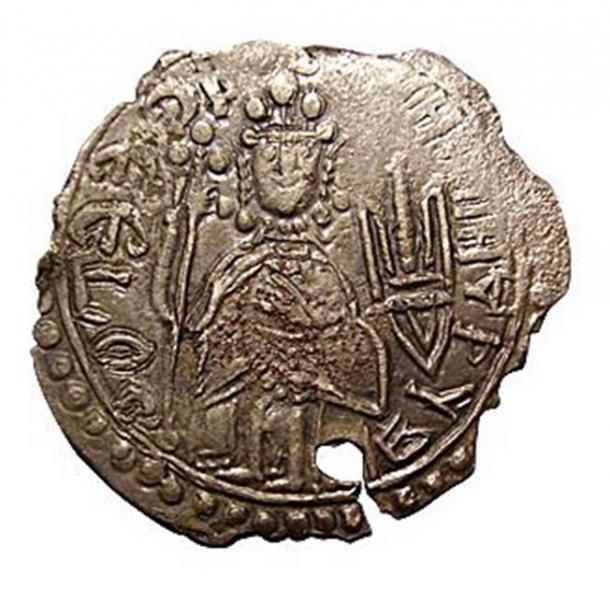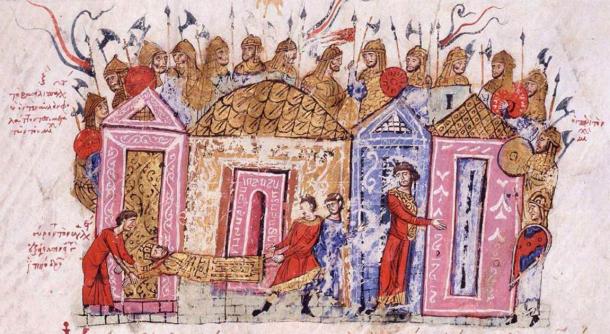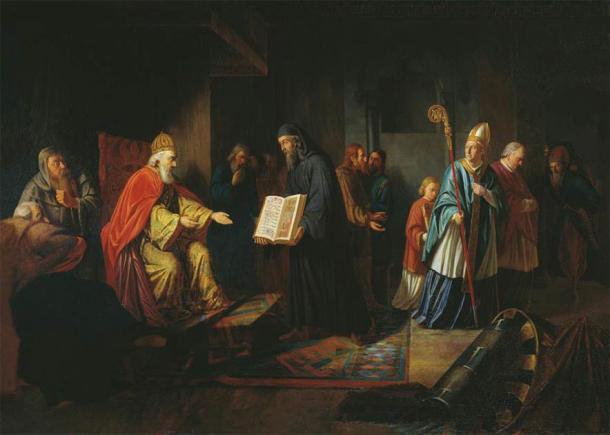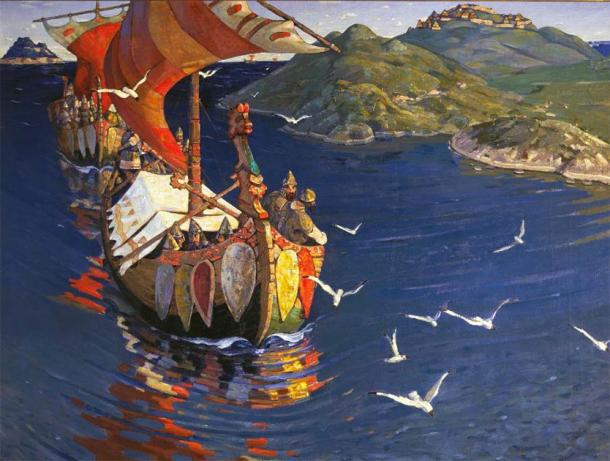It is not uncommon for ancient coins to be found in buried hoards around the world, but some discoveries are more unique than others, such as an unusual find of Kievan Rus coins unearthed in Ireland. A metal detectorist discovered several very rare coins that date to over 1000 years ago.. These silver and gold coins are important, in part because they are the first Rus-Viking coins found in Ireland, and also because they are providing new insights into the medieval period.
The cache of coins was unearthed by metal detector enthusiast Robert Carley in Glanmire, near Cork City. He wrote in a letter, which is quoted by Undercoil.com, that “These coins were detected on the ravine edge when part of it had devolved after heavy rain.” Carley lives nearby and believed that there was a chance of finding something with his detector. It was here that he found the coins after they had been exposed.

Reverse of srebrenik of Vladimir the Great now in the Odessa Numismatics Museum. ( Public Domain )
Coins of the Kievan Rus
Nothing else was found with the cache. The coins are small and stamped with Christian symbols and possibly images of monarchs.
Irish Central reports that Carley had found ‘ancient coins from Kievan Rus , and they date back to the 10th century.’ The Kievan or Kyivan Rus are regarded as important in the history of the modern nations of Russia, Ukraine, and Belarus and they were originally Vikings and who ruled a largely Slavic population. They built a massive state centered on Kiev(Kyiv), in modern-day Ukraine and controlled huge swathes of the teritory that is now central and northern Russia.

Varangian guardsmen in an illustration in a medieval chronicle. ( Public Domain )
Making Money Since Vladimir the Great
The Rurik Dynasty ruled the Kievan Rus state and they began minting their own coins during the reign of Vladimir the Great (c 958- 1015 AD). Gold and silver coins were produced, and they all had the same signs and images. Many of the coins they minted had the Tryzub (trident) symbol, which was adopted as one of the symbols of Ukraine after the collapse of the Soviet Union in 1991.
According to Irish Central , ‘The coins didn’t have any significant role in the country’s economy since they were mainly a symbol of the current ruler’s power’. Before Vladimir the Great, the Rus had used Arab and Byzantine currency or gold bars. The minting of their own money ‘was a political declaration of the country’s sovereignty and significance,’ according to Irish Central .

Ivan Eggink (1787—1867). ‘Grand Prince Vladimir is choosing the religion.’ ( Public Domain )
The Viking Coins Could Have Been Mercenary Pay
The Viking coins are exceedingly rare and were probably used to pay traders and mercenaries. Whoever buried them in the ground never came back to retrieve his small treasure of coins, which are remarkably well-preserved. The identity of the owner is not known but he may have been a Viking .
In the 10th and 11th century AD, Vikings had settled in Cork and turned it into a major trading center that was linked to the Scandinavian trading networks, which extended as far east as Kievan Rus. The Rus continued to have close relations with the Vikings.

Nicholas Roerich “Guests from Overseas”. From the series “Beginnings of Russia. The Slavs.” 1901. ( Public Domain )
The person who buried the coins ‘was probably a mercenary who brought them to the territory of Ireland,’ according to Irish Central . He may have been trading or living in Cork when he hid the treasure. The coins show how, despite their fearsome reputation, the Vikings also connected distant parts of the world, such as Ireland and what is now Ukraine and Russia.
Coins of Kievan Rus
These are high quality coins, which is not unusual. Often lower quality coins are found in the former lands of the Kievan Rus and their better quality silver ones are found outside it. It appears that the ones with a higher purity of silver were used to pay foreign merchants and mercenaries. The Viking coins may also have been used for diplomatic purposes. Gift-giving was important to forging alliances in the Middle Ages.
[embedded content]
Robert is delighted by his find and in his letter he states that, “Every fan of metal detecting would dream of finding something like that,” according to Undercoil.com. He believes that his discovery shows that every metal detectorist can make similar discoveries if they really try.
Robert also believes that his discoveries show that there are still many valuable finds to be made in Ireland. Certainly, news of his discovery will encourage many more Irish people to become metal detectorists.
Top image: One of the Kievan Rus Viking coins found in Ireland. Source: Robert Carley
This article was updated 28-8-2020 to better reflect the origin of the coins.
By Ed Whelan
Related posts:
Views: 0
 RSS Feed
RSS Feed

















 August 27th, 2020
August 27th, 2020  Awake Goy
Awake Goy  Posted in
Posted in  Tags:
Tags: 
















